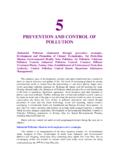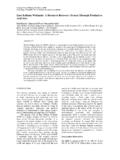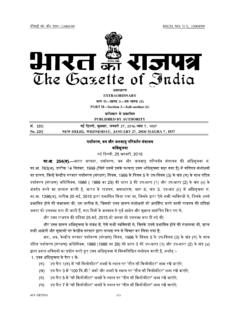Transcription of MINISTRY OF ENVIRONMENT AND FORESTS
1 MINISTRY OF ENVIRONMENT AND FORESTS . NOTIFICATION. New Delhi, the 22nd December, 1998. In exercise of the powers conferred by sections 6 and 25 of the ENVIRONMENT (Protection) Act, 1985 (29 of 1986), the Central Government hereby makes the following rules further to amend the ENVIRONMENT (Protection) Rules, 1986, namely:- 1. (1) These rules may be called the ENVIRONMENT (Protection) (Second Amendment). Rules, 1998. (2) They shall come into force on the date of their publication in the Official Gazette. 2. In the ENVIRONMENT (Protection) Rules, 1986 . (a) in rule 3, for sub-rule (3B), the following sub-rule shall be substituted, namely:- 3B) The combined effect of emission or discharge of environmental pollutants in an area, from industries, operations, processes, automobiles and domestic sources, shall not be permitted to exceed the relevant concentration in ambient air as specified against each pollutant in columns (3) to (5) of Schedule VII.
2 (b) in Schedule 1, . (i) against serial number 74 relating to emission standards for brick kilns, for the existing Para III, the following shall be substituted, namely :- III Existing moving chimney bull's trench kilns shall be dispensed with by June 30, 1999 and no new moving chimney kilns shall be allowed to come up ;. (ii) after serial number 80 and the entries thereto, the following serial numbers and entries shall be inserted, namely :- 81. Battery manufacturing industry (i) Lead Acid Battery Manufacturing Industries: Emission Standards. Source Pollutant Standards Conc. based (mg/Nm3). Grid casting Lead 10. Particulate matter 25. Oxide manufacturing Lead 10. Particulate matter 25. Paste mixing Lead 10.
3 Particulate matter 25. Assembling Lead 10. Particulate matter 25. PVC Section Particulate matter 150. To comply with the respective standards, all the emissions from above mentioned sources shall be routed through stack connected with hood and fan in addition to above, installation of control equipment viz. Bag filter/ventury scrubber, is also recommended. The minimum stack hight shall be 30 m. Liquid Effluent Discharge Standards Concentration based Pollutant standards pH Suspended solids 50 mg/l Lead mg/l (ii) Dry Cell Manufacturing Industry: Emission Standards Pollutant Standards Concentration-based (mg/Nm3). Particulate matter 50. Manganese as Mn 5. To comply with the respective standards, all the emissions from above-mentioned sources shall be routed through stack connected with hood and fan.
4 In addition to above, installation of control equipment viz. bag filter/ventury scrubber, is also recommended. The minimum stack height shall be 30 m. Effluent Standards Pollutant Concentration based standards pH Total suspended solids 100 mg/l Manganese as Mn 2 mg/l Mercury as Hg mg/l Zinc as Zn 5 mg/l (iii) Secondary Lead Smelters Pollutant Concentration based standards Lead as Pb 10 mg/Nm3. Particulate matter 50 mg/Nm3. Minimum stack height 30 m 82. Environmental Standards for Gas/Naphtha-based Thermal Power Plants (i) Limit for emission of Nox (a) For existing units 150 ppm (v/v) at 15% excess oxygen. (b) For new units with effect from 1-6-1999. Total generation of gas turbine Limit for Stack NOx emission [(v/v/), at 15% excess oxygen].
5 (a) 400 MW and above (i) 50 ppm for the units burning natural gas (ii) 100 ppm for the units burning naphtha (b) Less than 400 MW but upto 100 MW (i) 75 ppm for the units burning natural gas (ii) 100 ppm for the units burning naphtha (c) Less than 100 MW 100 ppm for units burning natural gas or naphtha as fuel (d) For the plants burning gas in a 100 ppm conventional boiler (ii) Stack height H in m should be calculated using the formula H=14 where Q is the emission rate SO2 in kg/hr, subject to a minimum of 30 mts. (iii) Liquid waste discharge limit Parameter Maximum limit of concentration (mg/l except for pH and temperature). pH Temperature As applicable for other thermal power plants Free available chlorine Suspended solids Oil and grease Copper (total) Iron (total) Zinc Chromium (total) Phosphate 83.
6 Standards/Guidelines for control of Noise Pollution from Stationary Diesel Generator (DG) Sets (A) Noise Standards for DG sets (15-500 KVA). The total sound power level, Lw, of a DG set should be less than, 94+10 log10. (KVA), dB(A), at the manufacturing stage, where, KVA is the nominal power rating of a DG set. This level should fall by 5 dB(A) every five years, till 2007, in 2002 and then in 2007. (B) Mandatory acoustic enclosure/acoustic treatment of room for stationary DG sets (5 KVA and above). Noise from the DG set should be controlled by providing an acoustic enclosure or by treating the room acoustically The acoustic enclosure/acoustic treatment of the room should be designed for minimum 25 dB(A) Insertion Loss or for meeting the ambient noise standards, whichever is on the higher side (if the actual ambient noise is on the higher side, it may not be possible to check the performance of the acoustic enclosure/acoustic treatment.)
7 Under such circumstances the performance may be checked for noise reduction upto actual ambient noise level, preferably, in the night time). The measurement for Insertion Loss may be done at different points at from the acoustic enclosure/room, and then averaged. The DG set should also be provided with proper exhaust muffler with insertion loss of minimum 25 dB(A). (C) Guidelines for the manufacturers/users of DG sets (5 KVA and above). 01 The manufacturer should offer to the user a standard acoustic enclosure of 25. dB(A) Insertion Loss and also a suitable exhaust muffler, with Insertion Loss of 25. dB(A). 02 The user should make efforts to bring down the noise levels due to the DG set, outside his premises, within the ambient noise requirements by proper siting and control measures.
8 03 The manufacturer should furnish noise power levels of the unsilenced DG sets as per standards prescribed under (A). 04 The total sound power level of a DG set, at the user's end, shall be within 2 dB(A). of the total sound power level of the DG set, at the manufacturing stage as prescribed under (A). 05 Installation of a DG set must be strictly in compliance with the recommendations of the DG set manufacturer. 06 A proper routine and preventive maintenance procedure for the DG set should be set and followed in consultation with the DG set manufacturer which would help prevent noise levels of the DG set from deferiorating with use. 84. Temperature Limit for Discharge of Condenser Cooling Water from Thermal Power Plant.
9 A: New thermal power plants, which will be using water from rivers/lakes/reservoirs, shall install cooling towers irrespective of location and capacity. Thermal power plants which will use sea water for cooling purposes, the condition below will apply. B: New projects in coastal areas using sea water. The thermal power plants using sea water should adopt suitable system to reduce water temperature at the final discharge point so that the resultant rise in the temperature of receiving water does not exceed 7 C over and above the ambient temperature of the receiving water bodies. C: Existing thermal power plants. Rise in temperature of condenser cooling water from inlet to the outlet of condenser shall not be more than 10 C.
10 D: Guidelines for discharge point: The discharge point shall preferably be located at the bottom of the water body at mid-term for proper dispersion of thermal discharge. In case of discharge of cooling water into sea, proper marine outfall shall be designed to achieve the prescribed standards. The point of discharge may be selected in consultation with concerned State Authorities/NIO. No cooling water discharge shall be permitted in estuaries or near ecologically sensitive areas such as mangroves, coral reefs/spawning and breeding grounds of aquatic flora and fauna. 85. Environmental Standards for Coal Washeries : A. Fugitive emission standards The difference in the value of suspended particulate matter, delta ( ), measured between 25 to 30 metre from the enclosure of coal crushing plant in the downward and leeward wind direction shall not exceed 150 micogram per cubic meter.

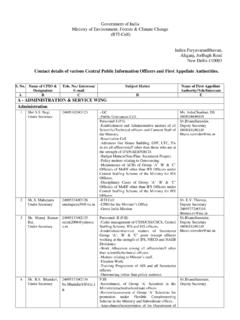
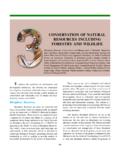
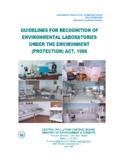
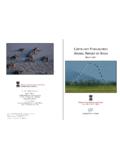
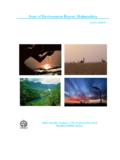
![Untitled-1 [www.moef.nic.in]](/cache/preview/0/7/5/4/5/e/c/5/thumb-07545ec5a24fcdf0c4f7836434cadcc8.jpg)
